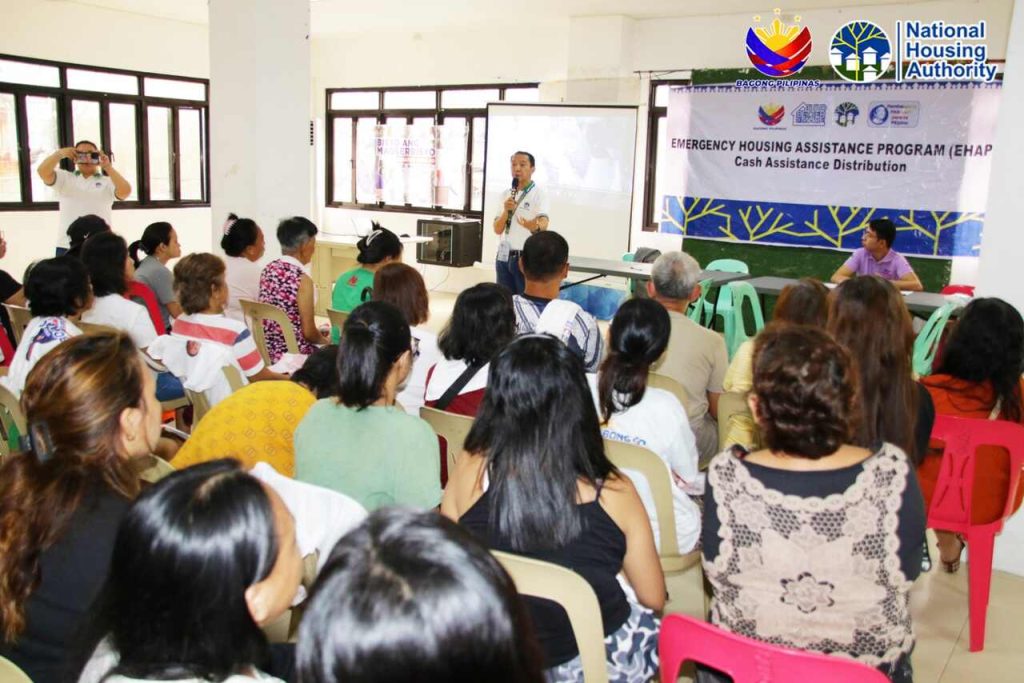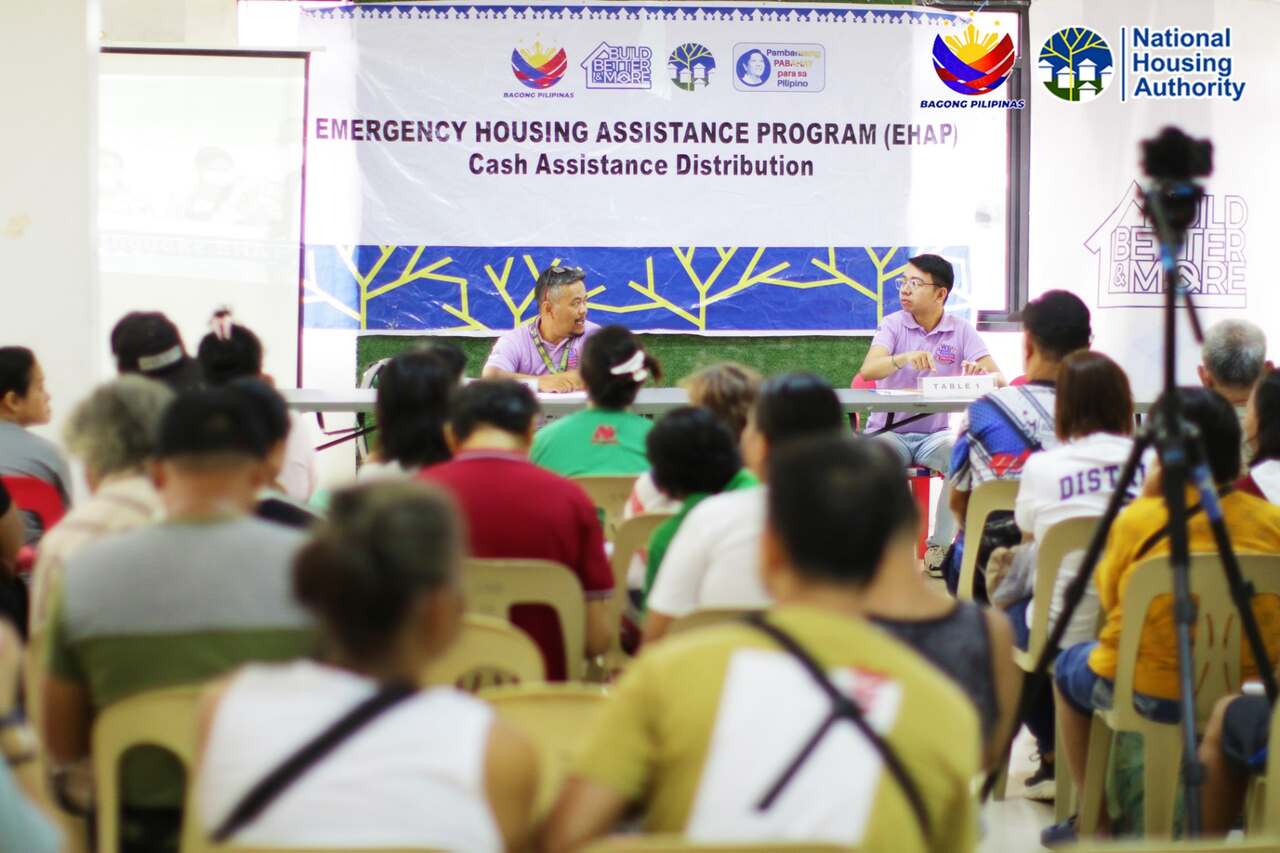The National Housing Authority (NHA) Emergency Housing Assistance Program (EHAP) is a government initiative designed to help families whose homes have been damaged or destroyed by natural or man-made disasters such as typhoons, earthquakes, floods, fires, volcanic eruptions, industrial accidents, or armed conflicts. This program is meant to support low-income households by offering either cash assistance or building materials depending on availability and necessity, to help affected families rebuild their homes.
Recovering from a disaster is challenging, but with the NHA EHAP there exists a path to rebuilding. If your home has been damaged due to a calamity, you can take the first step today by checking your eligibility, gathering your documents, and applying for EHAP assistance. To get started in securing the help you need, and starting with the recovery, keep reading this guide below.
Why Avail of the NHA EHAP?

This program is designed to provide quick and flexible assistance to affected families. Some benefits include:
- Fast Response: The program prioritizes immediate relief for disaster victims.
- Flexible Aid Options: You can receive either cash assistance or construction materials, depending on your needs.
- Community Support: The program helps entire communities recover and rebuild.
Types of Assistance Provided
The assistance provided through EHAP is tailored to meet the specific needs of affected families. It comes in two primary forms:
- Financial Aid: A cash grant of up to PHP 30,000 to help cover housing repair and rebuilding costs.
- Construction Materials: In large-scale disasters where construction materials are scarce, the NHA may provide essential building supplies such as roofing sheets, wooden planks, cement, and nails.
Target Beneficiaries
The program is designed to support specific groups who have been severely affected by natural or man-made disasters.
- Low-income families whose homes were partially or totally damaged by calamities.
- Victims of natural disasters such as typhoons, earthquakes, floods, volcanic eruptions, and landslides.
- Victims of man-made disasters including fires, industrial accidents, armed conflicts, and acts of terrorism.
- NHA housing beneficiaries who need urgent assistance to rebuild their homes.
- Marginalized and vulnerable communities struggling to recover after disasters.
- Families residing in disaster-prone areas who lack the financial means for reconstruction.
Who Can Apply?
To qualify for the EHAP, these target groups must at least meet the following criteria:
- Your home has been partially or totally damaged due to a disaster.
- You belong to a low-income or marginalized family.
- You can provide proof of damage and eligibility documents.
- You are an NHA housing beneficiary or reside in an area where the NHA operates its housing programs.
Required Documents
To get started, it’s best to start by gathering and preparing duplicate copies of the necessary documents to support your claim and prove your eligibility:
- Government-issued photo ID (driver’s license, passport, or similar identification).
- Proof of residence (barangay certification or utility bill).
- Proof of income (payslips, income certification, or tax return).
- Documentation of house damage (photos, police or fire reports, certifications from local authorities).
Step-by-Step Application Process
Applying for the NHA EHAP is straightforward. Once the requirements are ready, simply follow these steps to ensure a smooth process:
Step 1: Check Eligibility
- Visit the NHA website and use the online eligibility checker.
- Confirm that you meet the basic requirements for the program.
Step 2: Gather Required Documents
Prepare the necessary documents listed above.
Step 3: Submit Your Application
- Complete the online application form on the NHA website or visit your local NHA office.
- Upload or submit all required documents.
Step 4: Attend an Interview
- NHA personnel may conduct an interview or site visit to verify the extent of the damage and assess eligibility.
Step 5: Wait for Approval
- Once your application is reviewed and approved, you will be notified of the next steps.
- Attend an orientation session and sign a contract to formalize the assistance.
Where to Secure the Application Forms
Application forms for the NHA EHAP can be obtained from the following:
- National Housing Authority (NHA) Regional and District Offices – Visit the nearest NHA office in your area to request the application form.
- Local Government Units (LGUs) – Some LGUs, especially in disaster-affected areas, coordinate with NHA to distribute forms.
- NHA Official Website – Forms may be available for download on the NHA website.
Once completed, the application form and required documents should be submitted to the NHA Regional or District Office covering the applicant’s area. In some cases, LGUs may assist in collecting and forwarding applications to NHA.
Fees and Processing Timelines
The application for NHA EHAP is free of charge. Applicants are not required to pay any processing fees.
As for the processing period, the NHA did not clearly specify a timeline so this may vary depending on several circumstances. However, it is believed to generally take this much time to complete:
- Evaluation & Verification – Typically takes 15 to 30 working days, depending on the volume of applications and the availability of supporting documents.
- Approval & Release of Assistance – May take several weeks to a few months, depending on funding availability, location, and severity of the disaster.
Recent EHAP Assistance Efforts
Some of the recent EHAP programs include:
- Leyte Flood Victims: Families affected by flash floods in Leyte received PHP 30,000 each to rebuild their homes.
- Fire Victims in Pasay City: 48 families received financial aid through EHAP after a devastating fire.
- Davao de Oro Earthquake Survivors: Over 500 families were assisted with cash grants and housing support.
Tips for a Successful Application
To ensure that the application will be completed smoothly, interested applicants are encouraged to:
- Double-check all documents before submission to avoid delays.
- Provide detailed evidence of your home’s damage to strengthen your application.
- Be responsive to NHA communications and follow up on your application status.
Frequently Asked Questions (FAQs)
For your reference, here are some common questions and answers related to the NHA EHAP:
1. How long does it take to receive assistance?
Processing times vary, but applications are typically reviewed within a few weeks.
2. Can renters apply for EHAP?
No. This program is exclusively designed for homeowners. Interested renters who need similar types of help should check with the local authorities for alternative housing assistance.
3. What if I need additional assistance?
EHAP can be combined with other housing and disaster recovery programs. To learn more, you may reach out and contact the local government offices for more resources.
Video: Balai Talks—EHAP
To learn more about the NHA program designed to offer assistance that will help low-income families affected by calamities or other man-made disasters so they can recover so much more easily regardless of where they are in the Philippines, you may check out this video from NHA. In this video, NHA Spokesperson Melanie Severino takes the time to discuss the NHA EHAP and everything it offers during the third episode of the Balai Talks Special:
For more details, you may contact the National Housing Authority (NHA) via the following:
- Address: 5 Elliptical Road, Diliman, Quezon City, 1101 Metro Manila
- Phone: (02) 8426-4703
- Website: NHA Official Website
